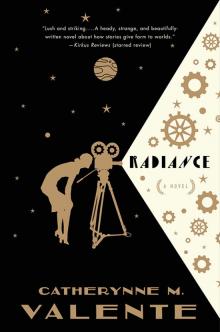


The Whisper of the Axe
Richard Condon

The Whisper of the Axe
Richard Condon
MYSTERIOUSPRESS.COM
Part One
1
9:56 P.M., 27 June 1976
Agatha Teel’s left shoulder had been shattered by a bullet fifty-one seconds ago. The man who shot her had just exited from the elevator two floors below her living room. She sat carefully in a chair and flicked on the light. She laid the open phone on the table and dialed.
“Jonas? Sis. Don’t talk. We got about two hours to get me out of here. I got myself shot and I’m bleeding real good. No, no! Get me Pikow’s surgeon and a big, dark car. Then come get me. Okay? Don’t talk, baby! Just do it.”
She stood shakily. She moved slowly across the room, stepping over the body of a man lying on his back, working slowly around the body of a young woman. Agatha Teel went along a connecting corridor, leaving all doors open behind her, into her huge bathroom, which had once taken plumbers, decorators and jewelers two months to install: a fantasy of lapis lazuli and alabaster, Apulian marble and onyx. Gasping with pain, she shucked off her white beaver dressing gown. Her body, shining with blood, was picked up by six full-length mirrors in the walls around the room. She pulled gauze pads and bandages out of a cabinet and tried, with one hand, to improvise some way to pack the wound.
She was on the run. She looked into her eyes in the mirror. “You better believe it,” she said thickly. “You on the run, girl. Maybe it’s all over.”
The wonders of her glorious life had been shut off like lights on a shimmering Christmas tree. She managed to fill a syringe with morphine and banged it into a trackless arm. She sat on the heated marble floor. Blood ran down across her satin skin into the coarse hairs of her lap.
If he made it, his people wouldn’t arrest her and hold her for trial. They would hold her still right where they found her and blow her brains out; no questions. She made herself get up and move. She stopped for a last look into the mirror of the greatest room of her life and she saw herself framed by all the cunning lighting and semiprecious stones set so artfully into the eight walls above the white fur scatter rugs.
She made it to the closet in the front hall. Pulling at the hanger with one hand, she got the long sable coat over her nakedness. She thought that he could be lying in a lake of blood down there at the front door but more likely he could get through: that horror kept her moving. He was out on the deserted street moving himself across the night, bleeding like a broken dam and trying to find a phone booth.
She heard the elevator start at the main floor. She wondered dizzily who would get to her first: his people or her people? She leaned against the wall, faced the elevator door, and sweated the glory of the dead past.
2
January 1976
They held special “American-style” graduation exercises at the Guerrilla War College at Karlik Tagh in the eastern part of the Sinkiang Province, 80 miles south of the Mongolian frontier. It was New Year’s Day 1976. Someone was playing “Oh, Promise Me” on the piano. Balloons in three colors were released from the ceiling as the last graduate was summoned to the stage and congratulated. Everyone in the class wore newly washed and pressed p’u-fu over fresh ch’ao fu and chi-fu. There was massed singing (“Show Me The Way To Go Home,” “She Wore a Yellow Ribbon”) and two valedictory addresses.
Sally Winn delivered the valedictory for the Women’s Camp. A tall, strong, banana-colored woman with healed knife scars on the right side of her face, she gave a short, inspiring speech. Part of it included these words: “We learned plenty here. I used to listen to that shit like ‘We Shall Overcome’ and I figured—too bad. But I know different now. I mean—I understand now. I learned how to combine myself, to industrialize myself. Man, America industrializes everything—crime, sports, sex, religion—so we don’t do one kidnap and wait. We don’t do one hijack and wait. We don’t rip off one bank at a time like little Mr. Lenin, no sir. We industrialize. We gone kidnap the famblies of twenty-five state governors on the same day. We gone take the money from the governors, then we gone kill those famblies of the twenty-five governors by some Gr-IS: we gonna throw them out the window. That’s what I mean to industrialize.…”
Kranak made the valedictory for the Men’s Camp because he was The Man in every way. He talked for twenty-eight minutes. In part of it he said, “… and I wonder how the great American people are going to adjust on the afternoon we detonate a fissionable device from an office in the Empire State Building in New York and take out that entire building and maybe eight square blocks around it and maybe waste forty or sixty thousand people.” There was a roll of applause and a lot of whistling from the women. “I’ll tell you how they are going to adjust,” Kranak said, “they are going to learn that political violence is here to stay and that through political violence they will have the only possible way to ever get their own country back again.”
The applause flapped and flared again. “Their country will fall. The people will pull it down themselves IF we break the people’s backs, IF we scourge them and torment them until they overturn that Establishment as it stands. We will bring systematic terror against the people—killing, maiming and marking them. We will close our eyes and ears to their agony until justice is reborn in the United States of America. We will use American lives and American sanity as currency to buy a failure of the national will. Until our plan was born it was a textbook verity that no group could get popular support unless it explained its operations as something more than nihilistic violence and random criminal assaults … because the Mau Mau, the PLO, the Japanese Red Army and the Tupamaros were sentimentalists. They kept telling themselves that they would, after all, one day be called upon to govern the nations they were fighting for and would need to remember how to imitate the dignity of the thieves and murderers who had governed before they were pulled down.
“Well—we are not sentimentalists. And we have no expectation nor desire ever to govern. When it is over—when we have done our work well—most of us will be dead. One third of America will be dead or dying and new leaders, now waiting, will take over the perfect state.
“We will rule from the streets until that day and our terror will bring that day—and salvation.”
3
1968–1976
For a woman who planned the extermination of sixty million Americans, Agatha Teel was stable and amiable. Her even disposition was made possible by the certainty of her knowledge that she would have to kill a lot of Americans in order to lever the rest of them into saving themselves. She never talked about what was wrong with the American society or what she planned to do with it, beyond destruction, to put it right. Her focus was simply to make sure that all American institutions would be made to disintegrate. She considered it someone else’s job to put it right after that, someone who would believe as much in the beautiful qualities of building as she believed in the healing qualities of destroying. She saw herself as being precisely and unselfishly fitted, as was no one else, to re-cast the American dream in annealing fire. She was sane. She used negatives to produce positives in her own explanation of herself to herself—such as “Kill them so they may live”—but she never spoke about why she would do what she was going to do. The power of the imagination of victims and torturers alike would produce, she knew, a collective vision far greater than her own. Also (no small thing) it was a personal challenge to surpass the power of the men leading the nations and the armies; to grind them into fine dust with her mind.
The conception of what she had willed herself to do was akin to Genesis with Teel as the Creator, but if she thought of herself as God no one ever knew that because no God had ever been as adorably amiable as Teel.
In 1968 Teel was thirty-five years old, wi
th an IQ of 174, and commander of the still-as-yet (almost) unformed Freedom Fighters aka American Freedom Fighters aka FF/AFF, whose Eastern Action Area extended along the Atlantic seaboard from Boston to Miami, inland to 95°W which, roughly, made Milwaukee, Minneapolis, Chicago, St. Louis, Kansas City, Houston and New Orleans the western boundary of the command. Teel’s Western Action Area would be smaller, operating only in the Pacific coastal cities plus Denver.
Urban guerrilla officers from Uruguay, the Middle East, Japan, Ireland, and China had been seconded to act as organizing Army Corps commanders until 1976, when the trained cadres of Teel’s own native American officers would have finished their training. Some of these foreign officers were paid their salaries directly. Others preferred that their earnings go to their home organizations. They were all seasoned specialists: the Uruguayan, Enrique Jorge Molina, had been a divisional commander with the Tupamaros. He specialized in kidnapping, hijacking, and interrogations. Sato Koroshi was on loan from the Japanese Red Army. His field was urban electrical systems, fuel gas storage, water treatment and sewage systems. Boohoo Gargan was a graduate engineer who had perfected car bomb design for the IRA and was a specialist in school and playground bombing. Together they covered the spectrum of Guerrilla Discipline, Materiel Storage, Compartmentalized Disbursement, Enemy Force Infiltration, Metropolitan Communications, Petrol Cannons, Torture, and Bribery. Teel had enriched the guerrilla technique with what she called Gr-I (for Ground One), a plan for throwing people out of windows to simulate suicides and increase terror. Eventually, all Army Corps commands would be interchangeable. They would be fighting a new kind of war, i.e., to destroy people instead of troops, until the people, in their insane desperation, were driven to turn upon troops and government itself. Government would be even more impossible than it had been since the election of Richard Nixon, Teel figured, when the Rockefellers had planted Dr. Kissinger upon him.
Teel’s General Staff was led by a Colonel Pikow, on loan from the Guerrilla Training Center of the People’s Republic of China. The General Staff projected guerrilla operations in thirty American cities* Indianapolis, as a simultaneous action in all-out, full-scale urban warfare. In 1968 Teel was still six years away from intensive recruitment. She had, however, begun specialist recruitment and specialist training. She was on her way to securing total financing.
Teel was as deliberate and as self-protective as Montgomery of Alamein. If she needed three of anything she laid away fifteen. She was going to refuse to allow any strike, small or enormous, until everything was prepared: weapons and munitions dumps; food; medical supplies; materiel caches and command hide-outs; extraordinarily protected money-channelling so that precisely the right amount of money would be where it was needed but no chances would be taken that any great part of it could be lost without recovery. Her street hospital organization exceeded the efficiency of anything ever attempted by a contra-governmental force.
Teel demanded that everything interact on Corps, Division, Brigade and Regimental levels. She accepted only urban battle plans which would give her a 5 to 1 advantage of surprise. If a projected organizing span double-checked out to be a safe two years, four months and nine days, Teel insisted upon allowing—and then nailed down the provisions for—eight years of organizing and preparation. She could not be hurried. She carried the international operation of financing and training support in her head. She saw to it that guerrilla-organizing Corps Commanders, imported from the IRA, the Tupamaros and the PLO, learned to carry all details of urban guerrilla operations in their heads by a continual simplification and redesigning of the thirty city operations.
Teel’s greatest need was to maintain her own invisibility as a revolutionary and as a revolutionary leader. She had no intention of going down in history as the female Lenin of the Second American Revolution. She believed in now and she believed in staying alive while it was still now. With the exception of her single liaison, Colonel Pikow, and her own brother, Jonas Teel, no one in the FF/AFF movement knew who she was. It was necessary that the revolutionary side of Teel remain invisible so that her visible side, like the moon, could loom larger and larger and fuller and fuller, as a “safe and sane, go-along, conservative American female leader” who sat on Presidential commissions, represented her country in the United States delegation to the United Nations, consulted with leaders of the Congress, the Pentagon, and Justices of the Supreme Court—a woman who was one of the three leading trial lawyers in the United States.
Teel had invented the source of financing for the Thirty Cities’ War.* Her single financial problem was how to conceal the first half-billion dollars, how to hold back cash delivery from her multiple sources so that the money remained their problem, not hers, for as long as possible; how to launder and re-invest money; how to pay taxes on what part of what income; where to store the overages in places which would eventually deliver the money safely to individual commands at street-fighting level; how to pay for imported materiel in an untraceable manner.
Between 1968 and 1976, Teel established seven retail chains ranging from eight to fifty-one stores each, selling ordinary merchandise and making a good profit. She owned 209 businesses operating out of the Thirty Cities with a combined staff of 4,300 earning attractive profits. She owned a non-affiliated group of variously named personal finance companies with 151 retail outlets in the Thirty Cities which operated at splendid profits; sixty-seven wholly owned pawn shops, and forty-one used clothing and furniture stores. Teel operated these vast businesses as attorney for the non-existent other owners through management committees she appointed. Teel considered that she owned everything the way a bishop owns everything which seems to belong to the church within his diocese. For instant communications she owned 189 bars & grills, 219 newsstands, eleven taxi companies, the Rockrimmon Bank & Trust Company in Stamford, Connecticut, and a slightly smaller bank in Brussels. The organization could also communicate easily and quickly through direct courier access to 31,750 heroin pushers, 319 dope houses, 207,840 whores and 41,568 pimps; a formidable intelligence organization overall.
Because of her background as a criminal lawyer, Teel knew the heroin wholesalers across the country. They became a part of her planning because there was so much more money in shit than there had ever been in booze and beer during Prohibition. Also, the money in heroin had corrupted a lot of people across the board and it was easy for her to reach the people heroin had corrupted (not by their personal narcotics habit but as one more part of the hundreds of billions of dollars thrown off by the habit).
Teel could understand injustice and yet she couldn’t. She could feel what people might feel (she thought) as she planned guerrilla operations, but she wasn’t all that sensitive and empathetic about what their feelings would be when their children got blown through roofs, or their wives got thrown out of twelfth-story windows by fake firemen after an arson or when they looked down to see their own left leg and it wasn’t there anymore. Teel was unable to remember that, throughout history, people had never felt militant about their politics; habits were the order. Teel overlooked the bodies, ignored the huge public mind which thought as one, just as much as if it had been a creature of Venusian science fiction, and settled down to make sure that survivors of the second revolution—regardless of race, creed, or color—were saved; their lot improved. The last part was a necessary human corollary in order to be forgiven the first part, because (throughout all of it in spite of all she did not understand) Teel knew there was no charge for dying: she would sorely resist her own chances to die as those chances came.
*Boston, Providence, New Haven, The New York Metropolitan Area, Philadelphia, Baltimore, Pittsburgh, Washington, Charlotte, Atlanta, Jacksonville, Miami, New Orleans, Louisville, Memphis, Cleveland, Detroit, Cincinnati, Chicago, Milwaukee, St. Louis, Kansas City, Dallas, Houston, Denver, LA, San Francisco, Portland and Seattle.
* This was the ultimate designation by the world history industry. The name was coined in a signed newspaper column by T
homas Buckley, The New York Times.
4
1933–1968
Publicly, Agatha Teel was one of the four leading black women in the United States of her age group (35–55). She was first among equals as a black leader at the American bar according to all classified surveillance on the computer reels of United States Government investigative agencies. She was classified safely as “leftist but not left” by the Federal Bureau of Investigation, the Central Intelligence Agency, the National Security Agency, Air Force Intelligence, the White House Secret Service detail, Naval Intelligence, AEC Security, the Defense Department intelligence agency, the State Department’s Bureau of Research & Intelligence, and the security unit of the Treasury Department. All other government security agencies cross-filed from these seminal sources.
Teel’s parents were dead. Her younger brother, and only sibling, Jonas Teel, was an experimental and theoretical physicist. Historians were going to have a hard time figuring out what button of her lifetime conditioning Teel had pushed to get herself started as a terrorist. Teel was black in a white society, but so were 16,000,000 other Americans who had very few of the edges Teel had put together for herself and her brother. It was as if Teel had raised Jonas, so great was her influence on her younger brother. They had a mighty bond.
Teel had a summa cum laude degree from Barnard College and a co-editorship of the Columbia University Law Review. After passing her bar examinations in the top .3 percent of 1 percent of her class at law school, she was finally able to practice law after her twenty-third job interview. She had begun on Wall Street but ended successfully only with the firm of Rackin & Grady (in association with Turem, Schulz & Ortega) who specialized in criminal law practice and who shared offices with the Busy Bee Bail Bonding Company in a four-story cockroach farm near the courts on West 124th Street.














